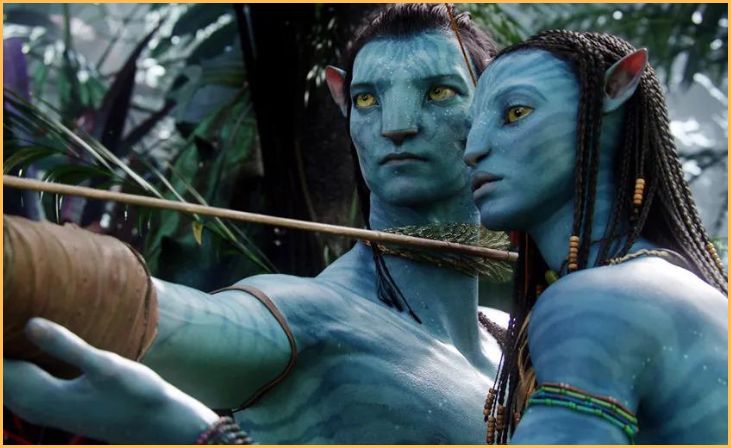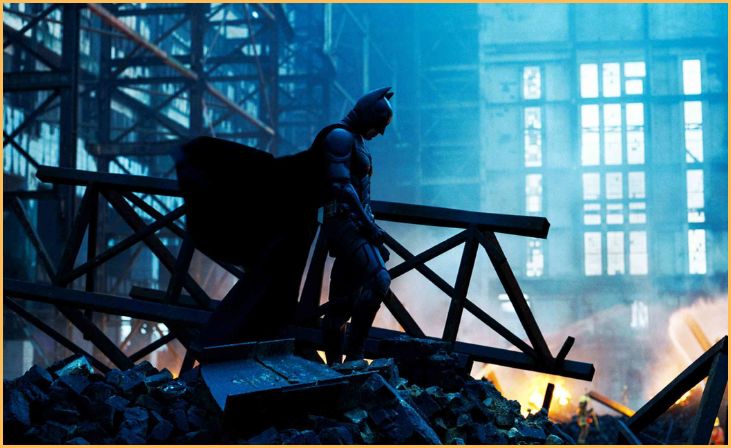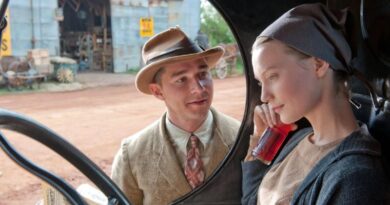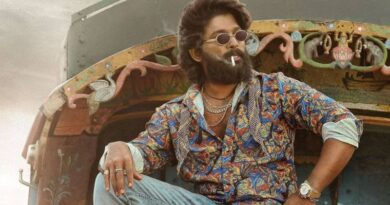In the enchanting world of cinema, where lights illuminate the silver screen and cameras capture the essence of human imagination, a profound transformation occurs. Beyond the realm of mere entertainment, certain cinematic masterpieces transcend the boundaries of the ordinary to become enduring cultural landmarks. This article embarks on a journey into the captivating narratives woven by 8 blockbuster movies that have indelibly altered the course of history, leaving an indelible mark on both society and the film industry.
Within the frames of these cinematic marvels, audiences are not merely spectators; they are participants in a collective experience that goes beyond the confines of the theater. These movies cease to be mere flickering images—they become portals into alternate realities, vessels carrying profound messages, and catalysts for societal introspection.
8 Blockbuster Movies That Forever Changed The World
Star Wars (1977)

George Lucas’s “Star Wars” is a cinematic masterpiece that not only changed the landscape of filmmaking but also became a cultural phenomenon. Released in 1977, the space opera introduced audiences to a galaxy far, far away, featuring iconic characters like Luke Skywalker, Princess Leia, and Darth Vader. The film’s groundbreaking special effects, innovative use of practical models, and John Williams’ iconic score set new standards for the industry. Beyond its technical achievements, “Star Wars” created a fervent fan base and spawned a vast franchise with sequels, prequels, spin-offs, and an extended universe of books and comics. The Force became a cultural touchstone, and phrases like “May the Force be with you” entered everyday language.
Also Read:- Best Movies to Watch on Netflix
The Godfather (1972)
Francis Ford Coppola’s “The Godfather” is a cinematic masterpiece that forever changed the gangster genre. Adapted from Mario Puzo’s novel, the film follows the Corleone family and their patriarch, Vito Corleone, played by Marlon Brando. With its intricate storytelling, complex characters, and powerful performances, “The Godfather” elevated the crime drama to new heights. The film’s influence can be seen in subsequent works across various mediums, from television series like “The Sopranos” to other films exploring the dynamics of organized crime. Brando’s portrayal of Vito Corleone became iconic, and the line “I’m gonna make him an offer he can’t refuse” is etched into the cultural lexicon.
Jurassic Park (1993)
Steven Spielberg’s “Jurassic Park” not only mesmerized audiences with its thrilling storyline but also revolutionized the film industry with its groundbreaking use of computer-generated imagery (CGI). Based on Michael Crichton’s novel, the film brought dinosaurs back to life in a way never seen before, using CGI to create realistic and awe-inspiring creatures. The seamless integration of CGI with practical effects set a new standard for visual storytelling. “Jurassic Park” showcased the potential of technology in filmmaking, sparking a shift in how filmmakers approached special effects. The film’s success also marked a turning point in Hollywood, with studios increasingly investing in CGI for spectacular visual experiences. Beyond its technical achievements, “Jurassic Park” captivated audiences with its suspenseful narrative and memorable characters, leaving an indelible mark on the world of cinema.
Avatar (2009)

James Cameron’s “Avatar” is a sci-fi epic that not only became a global box office phenomenon but also pushed the boundaries of filmmaking technology. Released in 2009, the film is set in the lush world of Pandora and follows the conflict between human colonizers and the indigenous Na’vi. What set “Avatar” apart was its groundbreaking use of 3D technology, creating an immersive visual experience that captivated audiences worldwide. The film’s success contributed to the resurgence of 3D filmmaking and influenced how studios approached the presentation of their films. “Avatar” became the highest-grossing film of all time, surpassing Cameron’s previous blockbuster, “Titanic.” Beyond its financial success, the film’s environmental themes and stunning visuals left a lasting impact, shaping discussions about the intersection of storytelling, technology, and environmentalism in filmmaking.
The Matrix (1999)
The Wachowskis’ “The Matrix” is a mind-bending sci-fi action film that not only redefined the genre but also left an enduring impact on filmmaking and popular culture. Released in 1999, the film introduced audiences to a dystopian world where reality is manipulated by intelligent machines. What set “The Matrix” apart was its groundbreaking use of visual effects, particularly the innovative “bullet time” technique, which allowed for dynamic and visually stunning action sequences. The film’s influence extended beyond its technical achievements, shaping the aesthetics of action films and inspiring a wave of imitators. The philosophical themes explored in “The Matrix,” including the nature of reality and individual choice, added depth to the narrative, elevating it from a mere action spectacle to a thought-provoking cinematic experience. Keanu Reeves’ portrayal of Neo and the iconic character of Morpheus, played by Laurence Fishburne, became cultural touchstones, further solidifying the film’s place in cinematic history.
Titanic (1997)
James Cameron’s “Titanic” is a romantic drama that not only became a global box office phenomenon but also set new standards for filmmaking and storytelling. Released in 1997, the film tells the tragic love story of Jack and Rose against the backdrop of the ill-fated maiden voyage of the RMS Titanic. “Titanic” not only captivated audiences with its sweeping romance but also dazzled them with its groundbreaking visual effects, particularly in the recreation of the sinking ship. The film’s success was unparalleled, becoming the highest-grossing film of its time and winning 11 Academy Awards, including Best Picture and Best Director for Cameron. Beyond its accolades, “Titanic” played a crucial role in shaping the modern blockbuster, with its combination of spectacle, emotion, and technical prowess. The film’s impact extended beyond the cinema, influencing fashion, music, and popular culture, making it a cultural touchstone of the late 20th century.
Harry Potter series (2001-2011)
The film adaptations of J.K. Rowling’s “Harry Potter” book series are a monumental achievement that not only brought the magical world of Hogwarts to life but also created a cultural phenomenon. Spanning eight films from 2001 to 2011, the series follows the journey of a young wizard, Harry Potter, and his friends as they confront the dark wizard Voldemort. The “Harry Potter” films not only faithfully translated the beloved books to the screen but also evolved in style and maturity along with its characters. The success of the series revitalized the fantasy genre in cinema and introduced a new generation to the joys of reading. The ensemble cast, including Daniel Radcliffe, Emma Watson, and Rupert Grint, became synonymous with their characters, and the magical universe of “Harry Potter” left an indelible mark on popular culture. The franchise’s impact is still felt today, with ongoing spin-offs, theme park attractions, and a dedicated fan base.
The Dark Knight (2008)

Christopher Nolan’s “The Dark Knight” is a superhero film that not only redefined the genre but also stands as a cinematic achievement with its complex characters and thought-provoking themes. Released in 2008 as the second installment in Nolan’s Batman trilogy, the film follows the masked vigilante Batman as he faces off against the anarchic Joker, portrayed by Heath Ledger in an iconic performance. “The Dark Knight” not only elevated the superhero genre to new heights but also transcended it, drawing comparisons to classic crime dramas. Ledger’s portrayal of the Joker, posthumously earning him an Academy Award, became a cultural touchstone, and the film’s exploration of morality, chaos, and the nature of heroism set it apart from traditional comic book adaptations. Beyond its critical acclaim, “The Dark Knight” had a significant impact on the industry, influencing subsequent superhero films to embrace darker and more complex narratives. The film’s legacy endures as a benchmark for the potential depth and sophistication within the superhero genre.
Also Read:- Upcoming Movies
Conclusion
Within the dynamic and ever-evolving landscape of cinema, eight blockbuster movies stand tall, serving as monuments that encapsulate the essence of creativity, innovation, and profound cultural influence. Each of these cinematic gems has not merely etched its name in the annals of film history but has erected an enduring monument, leaving an indelible mark that reverberates through time. In doing so, they have collectively and individually altered the very fabric of how we perceive and experience storytelling on the grand canvas of the silver screen.
These movies, akin to towering sculptures in the cinematic realm, embody the pinnacle of human creativity. Through their narratives, characters, and cinematography, they showcase the boundless imagination and artistic prowess that the world of cinema can harness. Their stories are not just tales told; they are manifestations of the human spirit, capturing emotions, ideas, and societal reflections with unparalleled finesse.
FAQs
These movies redefine genres, pushing cinematic boundaries with innovative storytelling and groundbreaking visuals.
Absolutely! Most of these films not only dominated the box office but also garnered critical acclaim and numerous awards.






